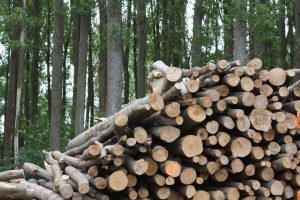 Last Monday, Scott Pruitt announced that the Environmental Protection Agency will now consider the burning of biomass for energy to be carbon neutral. The agency memo points out that the use of biomass for energy can bolster domestic energy production, reduce wildfire risk, and help ensure that forests continue to remove carbon from the atmosphere. The memo further states that “Managed forests improve air and water quality while creating valuable jobs and thousands of products that improve our daily lives.”
Last Monday, Scott Pruitt announced that the Environmental Protection Agency will now consider the burning of biomass for energy to be carbon neutral. The agency memo points out that the use of biomass for energy can bolster domestic energy production, reduce wildfire risk, and help ensure that forests continue to remove carbon from the atmosphere. The memo further states that “Managed forests improve air and water quality while creating valuable jobs and thousands of products that improve our daily lives.”
Despite the ruling, the debate continues over the carbon neutrality of biomass. Scientists and various non-governmental organizations have raised concerns that forests clear-cut for fuel may not regrow as planned. Due to the amount of time required for trees to grow there is the possibility that economic or other factors may force landowners to abandon or change the planned regrowth. This means that the carbon dioxide released through energy generation might not ever be removed from the air again.
However, designating energy derived from the burning of biomass as carbon neutral is in line with the wishes of many in the industry. This ruling supports the sector’s calls for the deregulation of biomass carbon dioxide emissions, which would exempt the industry from some provisions in the Clean Air Act and could help make energy from biomass a competitive alternative to fossil fuels.
Such an idea is not new. In 2016, as part of a larger bipartisan energy bill, a group of Senators tried to pass a similar change which would have recognized wood burning as carbon neutral. Additionally, a provision in the federal spending bill introduced in March of this year encouraged officials to “reflect the carbon-neutrality of forest bioenergy and recognize biomass as a renewable energy source.” Similar rules are already in place in the European Union where biomass generation accounted for 64% of total renewable generation in 2015.
A blanket ruling that biomass as an energy fuel is (or isn’t) carbon neutral is not what we need. That kind of thinking is part of the problem, not the… Read more »
EPA’s blanket declaration of neutrality is undoubtedly considered a well-earned victory by the biomass energy and power sector. More likely, however, the ruling will serve as a rod around which… Read more »
Back in 2009, when I was in Senator Specter’s office, we were visited by an excellent spokesman for the logging industry, with a very well thought-out plan for generating electricity… Read more »
Well, biomass has so many variables, I could argue this either way. So I believe this issue should be carved up and discussed in segments. For sewage, manures, poultry litters,… Read more »
I strongly encourage anyone interested in this issue to read an excellent multi-part report on the topic from Climate Central called Pulp Fiction.